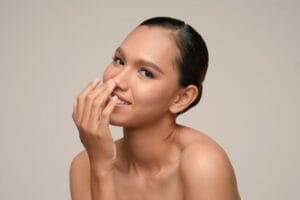Things to Know Before Rhinoplasty: Your Complete Pre-Surgery Guide
Sarah had been considering rhinoplasty for years. She’d saved up, researched surgeons, and finally scheduled her consultation. But when she walked into that office, she realized there were so many things she hadn’t thought about—things that could make or break her entire experience. The truth is, most people focus on the “after” photos and forget about the crucial “before” steps that determine success.
Quick Answer: Before rhinoplasty surgery, you should: research qualified surgeons thoroughly, understand realistic expectations, prepare for recovery (2-3 weeks off work), stop smoking and certain medications, arrange post-surgery support, prepare your home for recovery, and have detailed discussions about desired outcomes with your surgeon. Proper preparation significantly impacts both safety and results.
Rhinoplasty isn’t just about changing your nose—it’s about making informed decisions that affect your health, appearance, and wallet. Whether you’re seeking cosmetic improvements or addressing breathing issues, the preparation phase matters more than most people realize. Here’s what you need to know before taking that step.
Understanding Rhinoplasty: More Than Cosmetic Surgery
Let’s start with the basics, though you’ve probably done some research already. Rhinoplasty—commonly called a “nose job”—can address both aesthetic concerns and functional problems. Some people want a smaller nose, others need better breathing, and many want both. The procedure involves reshaping bone, cartilage, and tissue to achieve your goals.
But here’s what many don’t realize: rhinoplasty is one of the most complex facial surgeries. Your nose sits at the center of your face, and even small changes can dramatically alter your appearance. That’s why preparation isn’t just about showing up on surgery day—it’s about setting yourself up for the best possible outcome.
Things Before Rhinoplasty: Types of Rhinoplasty Procedures
There are two main approaches surgeons use. Open rhinoplasty involves a small incision across the columella (the strip of tissue between your nostrils), giving the surgeon full visibility. Closed rhinoplasty uses incisions inside the nostrils only, leaving no external scars. Each has pros and cons, and your surgeon will recommend based on your specific needs.
Revision rhinoplasty—fixing a previous surgery—is another category entirely. It’s more complex, often more expensive, and requires even more careful surgeon selection. If you’re considering a revision, that’s a whole different conversation about expectations and limitations.
Choosing the Right Surgeon: Your Most Critical Decision
This might seem obvious, but you’d be surprised how many people choose a surgeon based on price or convenience alone. That’s a mistake that can cost you—literally and figuratively—for years to come.
Board certification matters, but it’s not everything. Look for a surgeon certified by the American Board of Plastic Surgery or the American Board of Facial Plastic and Reconstructive Surgery. But also check their specific experience with rhinoplasty. Some plastic surgeons do mostly breast augmentations or tummy tucks—you want someone who specializes in noses.
What to Look for in Before-and-After Photos
When reviewing a surgeon’s portfolio, don’t just look at the prettiest results. Look for patients with similar nose shapes to yours. See if the results look natural, not overdone. Notice if the “after” photos show noses that still look like they belong on those faces—that’s the mark of skilled work.
Also, ask to see revision cases if you’re considering a second surgery. And here’s something many don’t think to ask: can you speak with previous patients? A good surgeon will have happy patients willing to share their experiences.
Things Before Rhinoplasty: Red Flags to Watch For
If a surgeon pressures you to book quickly with a “limited time discount,” run or If they won’t show you their credentials or seem evasive about complications, that’s concerning. If their consultation feels rushed or they don’t listen to your concerns, find someone else. This is your face—you deserve someone who treats it with the respect it deserves.
Rhinoplasty is among the top five cosmetic procedures, but that popularity means you’ll find both excellent and questionable practitioners. Do your homework.
Setting Realistic Expectations: The Honest Truth
Here’s where things get tricky. Social media and filtered photos create unrealistic expectations. Your nose won’t look perfect immediately after surgery—in fact, it’ll look pretty rough for a while. Swelling takes months, sometimes over a year, to fully resolve. The final result? You might not see it for 12-18 months.
That’s a long time to wait, and it’s something many patients aren’t prepared for. Your nose will change shape as swelling decreases—sometimes in ways that surprise you. Some days it might look great, other days you might wonder if something went wrong. That’s normal.
What Rhinoplasty Can and Can’t Do
Rhinoplasty can reduce or increase nose size, change the tip shape, narrow nostrils, fix a crooked nose, improve breathing, and address bumps or depressions. But it can’t give you someone else’s nose, guarantee perfection, or prevent aging changes. It also can’t fix underlying psychological issues if you’re seeking surgery for the wrong reasons.
Your surgeon should be honest about limitations. If you have very thick skin, results might be more subtle. If you have very thin skin, every small irregularity might be visible. Ethnic considerations matter too—preserving your ethnic identity while achieving your goals requires skill and cultural sensitivity.
Financial Planning: Understanding the True Cost
Let’s talk money, because rhinoplasty isn’t cheap. The average cost ranges from $5,000 to $15,000, sometimes more for complex cases or in expensive areas. But that’s just the surgeon’s fee—you also need to factor in anesthesia, facility fees, pre-surgery tests, post-surgery medications, and follow-up visits.
Insurance might cover part of it if you’re addressing breathing problems, but purely cosmetic procedures? That’s out of pocket. Some surgeons offer payment plans, but read the fine print. Interest rates can be high, and you don’t want to be paying off your nose job for years.
Hidden Costs People Forget
Time off work isn’t free—if you’re taking unpaid leave, factor that in. You might need help with childcare or household tasks during recovery. Prescription medications, special pillows for sleeping elevated, cold compresses, and other recovery supplies add up. And if you need a revision later? That’s another full procedure cost.
Also consider travel costs if you’re going to a surgeon in another city. Follow-up visits matter, and you’ll need several over the first year. Make sure you can afford to return for those appointments.
Pre-Surgery Preparation: The Practical Details
Once you’ve chosen your surgeon and scheduled your procedure, the real preparation begins. This isn’t just about showing up—it’s about optimizing your body and life for the best possible outcome.
Things Before Rhinoplasty: Medical Preparation
Your surgeon will give you specific instructions, but here’s what most require. Stop smoking at least four weeks before surgery—smoking impairs healing and increases complication risks. If you can’t quit, be honest with your surgeon. They might refuse to operate, and that’s for your safety.
Certain medications and supplements need to stop too. Blood thinners like aspirin, ibuprofen, and some herbal supplements can increase bleeding risks. Your surgeon will provide a complete list, but common ones include ginkgo, ginseng, vitamin E, and fish oil. Start this process early—some medications need weeks to clear your system.
You’ll need pre-surgery blood work and possibly other tests to ensure you’re healthy enough for anesthesia. If you have underlying health conditions, your surgeon and anesthesiologist need to know. Be completely honest—this isn’t the time to downplay health issues.
Preparing Your Home for Recovery
Recovery isn’t comfortable, but you can make it easier. Set up a recovery area with everything you need within arm’s reach: medications, water, phone charger, books or entertainment, tissues, and lip balm (breathing through your mouth dries your lips).
You’ll need to sleep elevated for at least a week—prop yourself up with pillows or use a wedge pillow. Stock up on soft foods that don’t require much chewing. Prepare meals in advance or arrange for someone to help. You won’t feel like cooking when you’re swollen and uncomfortable.
Arrange for help with driving, especially the first week. You can’t drive while taking pain medications, and you’ll have appointments to attend. Have someone available to take you to follow-up visits and handle any emergencies.
The Consultation Process: What to Ask
Your consultation is your chance to ask everything—and you should. Come prepared with questions, because once you’re in that room, it’s easy to forget what you wanted to know.
Things Before Rhinoplasty: Essential Questions for Your Surgeon
- How many rhinoplasty procedures do you perform annually? (Look for someone doing 50+ per year)
- What’s your revision rate? (Lower is better, but beware of anyone claiming zero)
- Can you show me computer imaging of potential results? (Understand it’s a guide, not a guarantee)
- What are the most common complications, and how do you handle them?
- What happens if I’m not happy with the results?
- Will you be performing the entire surgery yourself, or will residents assist?
- Where will the surgery take place, and is the facility accredited?
- What type of anesthesia will be used, and who administers it?
Don’t feel rushed during consultation. A good surgeon will spend time understanding your goals, examining your nose, and explaining the procedure. If they seem impatient or dismissive of your questions, that’s a red flag.
Bringing Photos: Helpful or Harmful?
Many patients bring photos of noses they like. This can be helpful for communication, but understand your nose has limitations based on your anatomy. You can’t get Jennifer Aniston’s nose if your bone structure is completely different. Use photos as a starting point for discussion, not as a demand.
Better yet, bring photos of yourself at different angles. Show your surgeon what bothers you specifically. Point out the exact features you want changed. The more specific you are, the better your surgeon can understand your goals.
Understanding the Recovery Process
Recovery from rhinoplasty isn’t linear, and that surprises many people. You’ll have good days and bad days, and your nose will look different from week to week as swelling changes.
The First Week: The Hardest Part
Immediately after surgery, you’ll have a splint on your nose and possibly packing inside. You’ll be swollen, bruised, and uncomfortable. Pain is usually manageable with prescribed medications, but the overall feeling of being “beat up” is real.
You’ll need to sleep elevated, avoid bending over, and be gentle with yourself. No heavy lifting, no strenuous activity, no blowing your nose. The splint usually comes off after a week, and that’s when you’ll see your new nose for the first time—though it’ll be very swollen.
Weeks 2-4: Gradual Improvement
Bruising fades, most swelling decreases, and you’ll start looking more like yourself. But you’ll still be swollen—especially in the morning. Many people can return to work after two weeks, though some need three. It depends on your job and how you’re healing.
You might notice your nose looks different from different angles or in different lighting. That’s normal. Swelling creates optical illusions, and your final shape is still developing beneath the surface.
Things Before Rhinoplasty: Months 1-6: The Long Haul
Most visible swelling resolves in the first few months, but subtle changes continue. The tip of your nose might still feel stiff, and you might have some numbness. These sensations gradually improve, but full healing takes time.
Your nose will continue refining its shape. Sometimes patients panic because their nose looks different than expected, but patience is key. Your surgeon will see you for follow-ups and can reassure you about what’s normal.
Year One and Beyond: Final Results
True final results can take 12-18 months to appear. The last bit of swelling, especially in the tip, takes the longest to resolve. By the one-year mark, you should have a good sense of your final appearance, though subtle changes might continue.
Some patients need minor revisions for small imperfections. That’s not uncommon, and many surgeons include a revision policy in their initial fee—ask about this during consultation.
Potential Risks and Complications
No surgery is risk-free, and rhinoplasty is no exception. Your surgeon should discuss potential complications honestly, not just gloss over them to get you to book.
Common Issues
Bleeding is possible, though usually minor. Infection is rare with proper care, but it can happen. Asymmetry might occur if healing isn’t even. Breathing problems can develop if too much tissue is removed or the internal structure is compromised.
Some people develop visible irregularities—bumps, depressions, or asymmetries that weren’t there before. Thick skin can mask results, while thin skin might show every small imperfection. These issues might require revision surgery.
Things Before Rhinoplasty: Serious Complications
Anesthesia risks exist with any surgery, though they’re rare in healthy patients. Severe bleeding requiring intervention is uncommon but possible. Necrosis (tissue death) can occur if blood supply is compromised, though this is extremely rare with experienced surgeons.
Psychological Preparation: The Mental Side
This aspect is often overlooked, but it’s crucial. Rhinoplasty changes your appearance, and that can affect how you see yourself. Some people struggle with the adjustment period, even when results are good.
Managing Expectations
If you’re seeking surgery because you think it will solve all your problems or make you completely happy, you might be disappointed. Rhinoplasty can improve your appearance and confidence, but it won’t fix underlying psychological issues. If you’re struggling with body dysmorphia or depression, address those issues first.
Some patients experience a period of regret or anxiety after surgery, even when healing is going well. Your face looks different, and that takes getting used to. This usually passes as you adjust to your new appearance, but it’s worth being prepared for.
Support Systems
Have people around you who support your decision. Recovery is easier when you have emotional support, not just physical help. But also be prepared for people who might not understand your choice—some friends or family members might have opinions, and you’ll need to be confident in your decision.
Timing Your Surgery: When to Schedule
Timing matters more than you might think. Schedule when you can take adequate time off work, when you don’t have major events coming up, and when you’re in good health.
Things Before Rhinoplasty: Seasonal Considerations
Some people prefer winter surgery because they can hide behind scarves and avoid sun exposure during early recovery. Others choose times when they can take extended vacations. There’s no perfect season, but consider your lifestyle and commitments.
Avoid scheduling right before major events—weddings, graduations, important work presentations. You want at least a month, preferably more, before any event where you need to look and feel your best.
Final Checklist: Are You Ready?
Before you commit to rhinoplasty, honestly assess whether you’re truly ready. Here’s a quick checklist:
- You’ve researched and chosen a qualified, experienced surgeon
- You understand realistic expectations and recovery timeline
- You can afford the procedure and associated costs
- You’re in good health and have cleared medical concerns
- You have adequate time off and support for recovery
- You’re doing this for yourself, not to please others
- You’ve had thorough consultations and all questions answered
- You’re prepared for the possibility of revision if needed
If you can check all these boxes, you’re probably well-prepared. If not, take more time. Rhinoplasty isn’t going anywhere—it’s better to wait and be fully ready than to rush into something you’re not prepared for.
Things Before Rhinoplasty: Making Your Decision
Rhinoplasty can be life-changing in positive ways, but success depends heavily on preparation. The things you do before surgery—choosing the right surgeon, setting realistic expectations, preparing your body and home, understanding recovery—these determine whether you’ll be happy with your results.
Take your time with this decision. Research thoroughly, ask questions, and don’t let anyone pressure you into moving faster than you’re comfortable. Your nose is central to your face, and changes here affect your entire appearance. Make sure you’re making informed choices every step of the way.
Remember, the best rhinoplasty results come from patients who are well-prepared, have realistic expectations, and work with skilled surgeons. If you’re considering this procedure, use this guide as a starting point, but also consult with qualified professionals who can address your specific situation. Your journey to rhinoplasty starts long before the surgery day—it starts with thorough preparation and informed decision-making.














Post Comment